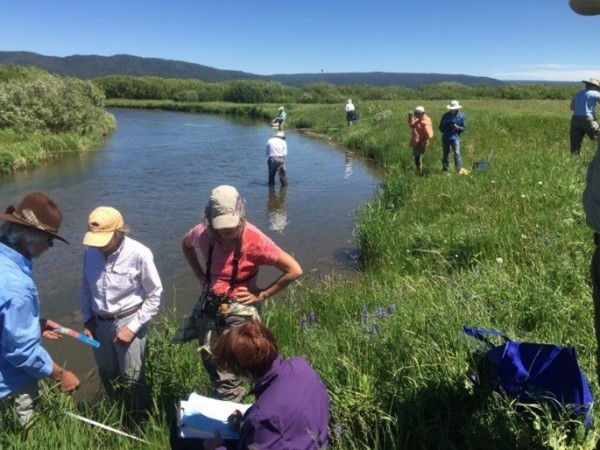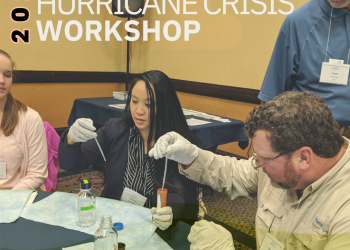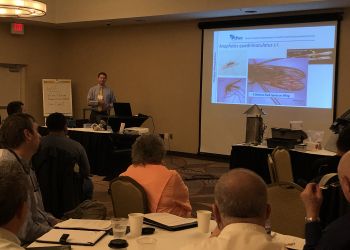This guest blog was written by Seamus Caslin, Student Services Contractor, Environmental Protection Agency (EPA).
“[Participatory] science is an effective way […] to get people excited about science and investigate a question that maybe no one else is asking.”
– Kari Hedin, Watershed Specialist, Fond Du Lac Band of Lake Superior Chippewa
“By connecting yourself to [participatory] science, you’re basically checking on the very essence of what makes your community alive.”
– Fred Tutman, Patuxent Riverkeeper
Members of the public are increasingly giving back to their communities by contributing to and conducting scientific research. Participatory science harnesses the collective strength of the public to answer environmental and public health questions, empowering communities to advance scientific knowledge in fields that are important to them. From innovative apps to collect and share environmental data with the public, to programs that loan out air quality sensors and use data from volunteer scientists, the EPA has found that participatory science is an effective tool for protecting public health.
Participatory science mutually benefits the EPA, volunteer scientists, and their communities. The EPA cannot directly monitor water quality in every stream or air quality in every neighborhood. Large networks of participatory scientists can greatly increase the amount of environmental data available for screening, research, and decision making. In addition, participatory science benefits volunteer scientists and their communities by increasing scientific literacy, forging place-based connections, and empowering people to protect the health of their communities.
The EPA engages in participatory science by developing projects, funding projects, providing technical guidance, and helping the public understand scientific information. This article highlights a few examples of EPA-developed or funded participatory science projects and resources to demonstrate the many ways participatory science can be used to protect public health.
Participatory Science Apps

The EPA has developed mobile apps that allow participatory scientists to directly share observations with the EPA and the public. For example, blooms of cyanobacteria can pollute waterbodies by producing toxins that harm the health of humans, pets, and ecosystems. In the bloomWatch app, participatory scientists can submit photos of algal blooms in waterways near them and in some locations can collect samples to verify these blooms. The submitted images then appear in a public dashboard, and, at the same time, are automatically emailed to the local organizations or agencies in charge of managing blooms. This allows participatory scientists to alert both the public and the authorities about blooms in their areas so that everybody can take appropriate action to protect public health.
Municipal/County Equipment Loan Programs
Throughout the country there are an increasing number of equipment loan programs coordinated out of municipal and county libraries. For example, in Los Angeles, community groups wanted to increase access to air quality information that would help people make informed choices and improve health outcomes in a region that faces ongoing air quality challenges. With its 72 branches serving four million residents, the Los Angeles library system is one of the largest in the country and was an ideal partner for a pilot program that allowed residents to check out air sensor equipment just as they would check out a book. This EPA-funded project distributed air sensor equipment to select branches within the library system and trained staff on their use and on implementing a related environmental education curriculum.
Integrated Data Dashboards

The EPA also uses participatory science data in several marquee efforts to make environmental information accessible to the public. The EPA’s Fire and Smoke Map displays detailed air quality information on a public map, including data from agencies, temporary sensors, and from low-cost sensors operated by participatory scientists. How’s My Waterway similarly allows the public to access information about water quality in their local lakes and streams, including data collected by municipalities, academia, agencies, and volunteer water monitoring programs.

Participatory science data in these applications has increased spatial and temporal data coverage, allowing individuals and municipalities to learn about environmental risks at a local scale and demonstrating the power of participatory science to make public health information available to everyone.
EPA Participatory Science Resources
The EPA has created several resources that are helpful to participatory science efforts across the country. Visit the EPA’s participatory science webpage to see the full collection of these resources. We would like to highlight a few here that might be of particular interest:
- Want to learn about the EPA-funded participatory science projects taking place across the country? The EPA describes a selection of these projects in its StoryMap on participatory science.
- To support quality assurance, the EPA developed a Quality Assurance Handbook for organizations starting or growing a participatory science project. The Handbook conveys common expectations for quality assurance and documentation and best management practices to help organizations that train and use volunteers in the collection of environmental data.
- The EPA’s Vision for Participatory Science outlines the principles that guide the Agency’s participatory science work, envisioning a future where the public is valued and empowered to help advance the scientific knowledge that informs environmental and public health decisions.
Each of these projects and resources demonstrate how participatory science is becoming a critical tool that the EPA uses to protect human health and the environment. By bringing members of the public into the scientific process, participatory science empowers communities to protect their health, promote environmental understanding, and break down the barriers between science and the people that it affects.
Blog main image caption: A group of volunteer scientists are collecting samples next to a stream. EPA has permission from the organization that originally took the photo to use it in publications.







